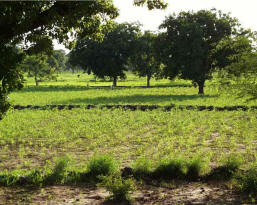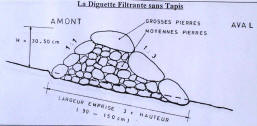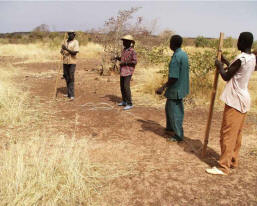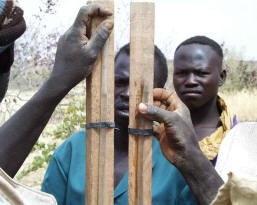|
|
||
|
Contour Stone Walls |
||
|
Careful selection of adequate measures On the Central Plateau soil and water conservation measures are the most effective solution. The experience made in the last 25 years is proof of this statement, because the prerequisites are given: • High population density and thus pressure for innovations • Big and highly motivated manpower potential • Availability of sufficient stones
Soil and Water Conservation (SWC) • Trenches, earth and stone walls • Hedges, trees (against wind erosion) • Fallow period, crop rotation
Central Plateau: Contour stone walls are the basis for all other measures
Simple technique / Many impacts The stone walls are positioned along the contours. There are different ways of placing the stones, depending on the slope and the amount of water. Compared to earth walls, the stone walls are permeable. The flow speed of the run-off water is slowed down and the water can spread over the whole field. Impacts Water runoff is slowed down, infiltration of water is improved and erosion reduced. At the same time sediment deposits are retained and soil fertility is increased. The main effects are: • increase of agricultural productivity • yields are guaranteed, also in years with irregular rainfalls • the ground water level is raised thus improving the growth of trees and bushes • a higher ground water level also improves the efficiency of wells for drinking water
Construction of contour stone walls
Determination of contours |
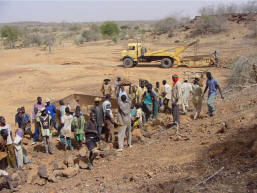 Many hard-working people are required to break and load the stones. For one ha the truck has to drive ten times to supply the farmers with enough stones for building the stone walls. |
|
|
Only carefully positioned stones have the desired effect. |
||
|
Left of the stone wall millet can be grown again. The picture is self explanatory!
20 years ago this area was an unfertile steppe. Training material for the farmer advisors
The contours are determined with tube water levels. For this purpose PATECORE has trained more than 2.000 farmers as advisors for the villages.
|
||
|
|
||
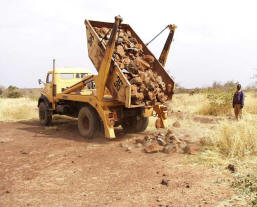
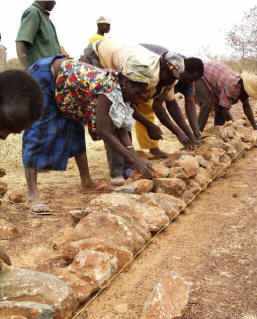
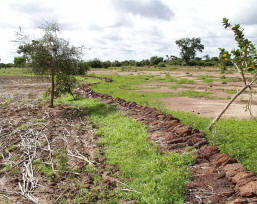
_small.jpg)
